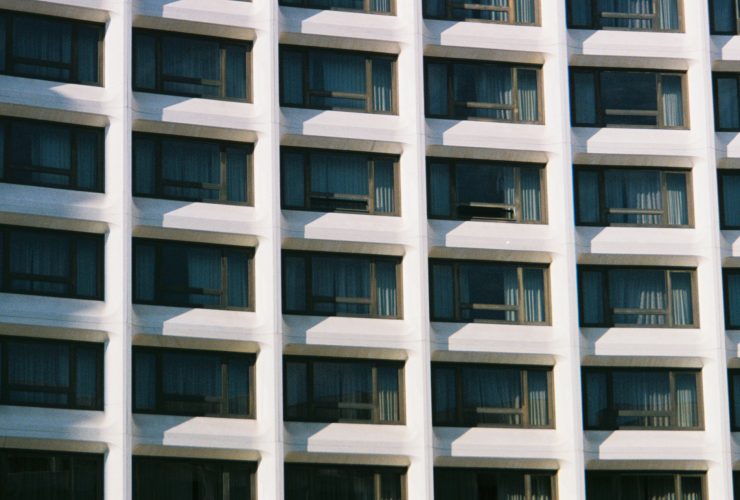At least 135 buildings along the U Street Corridor, comprised mostly of residences, are routed with lead piping, according to DC Water lead pipe data.
DC Water has instituted a new block-by-block approach to replace the lead pipes that currently serve several blocks of private residences in the District. This renovation will begin next month in Ward 6 as part of the DC Lead Free initiative, said Representative for DC Water John Lisle.
Using geo-coded data provided from DC Water, The Wash constructed a map of the U Street Corridor that illustrates the incidence of buildings that contain lead pipes. According to the map, 135 buildings with lead piping are concentrated at the intersections of three locations: Florida Ave. NW and V St. NW, 15th St. NW and S St., and 9th St. NW and T St. NW.
Incidence of lead pipe routing on the U Street Corridor
Commissioner for ANC 6E Alex Lopez expressed his gratitude toward the DC Council for committing funds in the FY22 budget to accelerate the replacement of lead piping. At this time, he declined to comment on the progress of the lead pipe replacement initiative in Shaw.
According to the Environmental Protection Agency, lead exposure poses serious health risks to children and adults. Side effects for adults, including pregnant women, include reproductive ramifications, decreased function of kidneys, and cardiovascular difficulties such as hypertension and increased blood pressure.
Of greater severity are the developmental threats that lead exposure pose to children. Children who record even minute lead levels in their blood present symptoms such as stunted cognitive and physical growth, hyperactivity, anemia, and hearing ailments.
Bureaucratic urgency to “dwindle the number of unknowns out there”
Commissioner for ANC 3/4G Randy Speck said that if replacing lead piping in D.C. is a matter of urgency, “they sure aren’t acting like it.” Speck has previously engaged in cross-ANC initiatives to lobby DC Water for a greater delegation of funds for lead pipe replacement across the District.
Speck said the first step towards lead pipe removal is to complete a rigorous inventory of how much lead piping still exists, and where it is located. While DC Water has identified about 20,000 service lines in the District are made of lead, nearly the same number of pipes still remain unaccounted for.

Identification of unknown pipes should be made top priority, Speck said. Approximately half of the nearly 15,000 unidentified service lines in D.C. are expected to be lead-based, he said.
After these remaining lines are identified, focus must shift to replacement, he said.
Speck said the lag on lead pipe identification is problematic because “every day there are lead pipes out there, there are people and adults who continue to be exposed to lead.”
Speck also voiced frustration at the time estimates for pipe replacement. He drew comparison to Newark, N.J., which underwent a lead pipe replacement initiative that was completed in a two years. By contrast, DC Water expects all lead service pipes to be removed by 2030.
Since March 2019, Newark, N.J. has replaced over 17,000 lines of lead as part of its pipe replacement program.
“Newark’s done it in two years; we don’t need 10 years to do it,” Speck said. “We have to do this as soon as we can.”
DC Water Vice President of Marketing and Communications John Lisle challenged the assumption that DC Water doesn’t have its priorities straight.
“Where we know we have lead, we want to remove that. It’s important for us,” he said.
Lisle said concerns about time estimates will dissolve after local officials and residents see the progress attained by the newly instituted block-by-block approach. This method requires DC Water to change all the lead pipes at once on a block. It is more efficient than sporadically identifying and changing lead pipes across the District, he said.
According to DC Water, 14,700 lines across the District are made of unknown materials. Lisle acknowledges the importance of identifying these lines in combination with the block-by-block approach.
Community outreach “to dwindle the number of unknowns out there” will accelerate the pace at which lead pipe identification can be accomplished, Lisle emphasized.
DC Water leverages direct calls, canvassing, yard signs, and the neighborly ‘I’m having mine changed, I hope you will too,’ to engage D.C residents in the initiative. The combination of these moving parts will boost the rate at which lead pipes will be replaced, he said.
Local officials widen the financial accessibility of lead pipe replacement for underserved communities
Relaying financial inequities that exist across the District, Commissioner Speck said the difference between his own constituency, Ward 3, versus Ward 6, is that “a lot of people can afford to do this themselves. This is a different story in other wards.”
“We are looking for a system to require for people don’t have to pay for them themselves. There needs to be an equitable and safe way to do it,” he said.
The Department of Energy and Environment works closely with DC Water to provide grants, ensuring all residents have affordable access to replacing lead pipes in their homes. “If money is the barrier for residents, hopefully this enables them to replace their service lines,” Lisle said.
The DOEE’s Lead Pipe Replacement Assistance Program (LPRAP) supports DC Lead Free by widening the eligibility of grants for residents — as of Oct. 1, all residents in the District are eligible to receive a grant that covers at least 50% of the cost to replace the hazardous piping.
DOEE Energy Program Specialist Cara Wattanodom said a change in the program assistance level has also allowed residents who qualify for full financial assistance to receive lead pipe replacement free of charge.
On average, lead pipe replacement costed consumers an average of $3,219 in FY21, she said.
Since the DOEE began supporting lead pipe replacement initiatives in D.C., 573 residents were approved as eligible for the grant, and 444 residents have had their quotes approved by DC Water, said Wattanodom.
As the bureaucratic wheel churns to widen the financial accessibility of lead pipe replacement for D.C.’s disadvantaged communities, local officials and D.C.’s environmental action organizations work against the clock to negotiate the best course of action to eliminate a hazardous public health crisis that continues to plague D.C. residents.















Add comment